On August 23, India made history by becoming the fourth country to successfully land on the moon. The Chandrayaan-3 mission executed a soft landing near the moon’s south pole, marking a first in lunar exploration. This achievement came on the heels of Russia’s failed lunar landing on August 20, due to an engine malfunction.
What sets India’s lunar mission apart is its cost-effectiveness. Despite a relatively modest budget allocation of $1.66 billion for the Department of Space in the last fiscal year, ISRO managed to execute the Chandrayaan-3 mission at a frugal cost of just $75 million, capturing global attention.
A key strategy for budget efficiency was the mission’s flight path. Unlike Russia’s Luna-25 mission, which took a more direct route, Chandrayaan-3 followed a longer trajectory that took over 40 days to reach its destination. This approach conserved fuel and allowed for less powerful—and less expensive—propulsion systems.
As India gears up for the September launch of Aditya-L1, a space-based solar observatory, now is a fitting time to look back at five pivotal moments in India’s space history, along with their associated costs.
Aryabhata
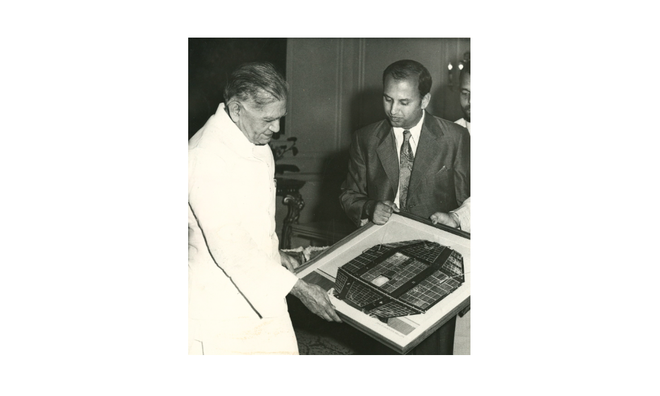
From The Hindu Archives: Indian Scientific Satellite Project Director Prof. U.R. Rao presenting a photograph of the ‘Aryabhata’ to Indian President, Shri Fakhruddin Ali Ahmed, at Rashtrapati Bhavan in New Delhi on May 24, 1975.
Named after the ancient Indian mathematician and astronomer Aryabhata, this was India’s first satellite, launched on April 19, 1975. Although ISRO designed and assembled the satellite, its launch was facilitated at no cost to India through a Russian-made Kosmos-3M rocket. Aryabhata’s mission involved studying Earth’s ionosphere, measuring solar neutrons and gamma rays, and conducting X-ray astronomy. Unfortunately, the mission was short-lived due to electrical power system failures.
Rohini Satellite RS-1
On July 18, 1980, India reached a significant milestone with the successful launch of RS-1, an experimental spin-stabilised satellite. This mission marked the debut of India’s indigenous launch vehicle, SLV-3, and cost ₹1.5 crore. RS-1 had diverse applications, including communications, television, and resource mapping, laying the groundwork for future advanced launch vehicle projects.
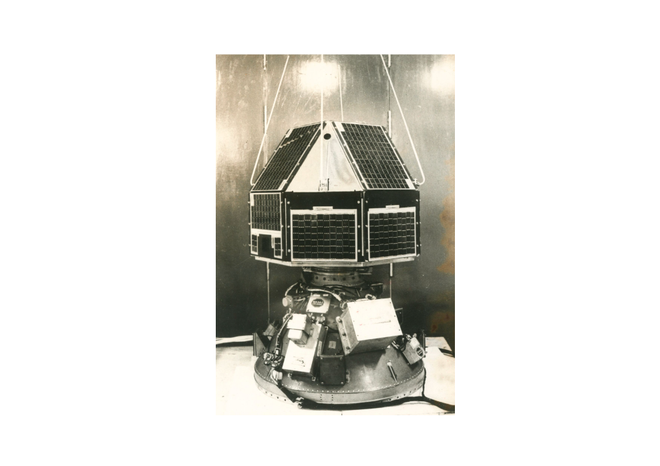
From The Hindu Archives: Image of the Rohini satellite RS-1, the payload in vehicle SLV-3 published on July 19, 1980.
Indian National Satellite (INSAT) System
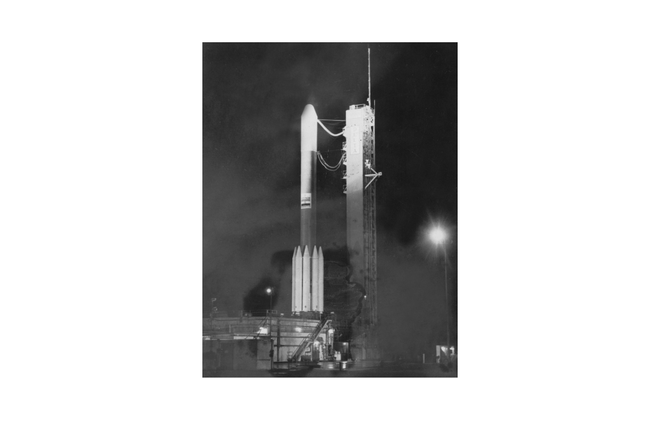
From The Hindu Archives: The image of the first of two multi-purpose satellites, INSAT-1A, launched from Cape Canaveral on April 10, 1982, aboard a Delta rocket, shown minutes before launch
On July 18, 1980, India reached a significant milestone with the successful launch of RS-1, an experimental spin-stabilised satellite. This mission marked the debut of India’s indigenous launch vehicle, SLV-3, and cost ₹1.5 crore. RS-1 had diverse applications, including communications, television, and resource mapping, laying the groundwork for future advanced launch vehicle projects.
Indian Remote Sensing (IRS) Program
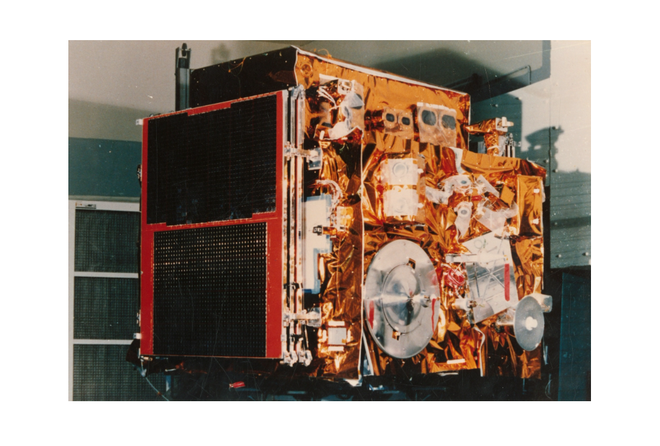
From The Hindu Archives: The image of Indian Remote Sensing Satellite (IRS-1A)
Initiated with the launch of IRS-1A on March 17, 1988, India’s IRS program has introduced a series of advanced indigenous remote-sensing satellites. IRS-1A’s launch cost was ₹7.5 crore, and the satellite served for over eight years. The program’s most recent addition, EOS-04, launched in February 2022, is a radar imaging satellite designed for applications in agriculture, forestry, hydrology, and flood mapping, with an approximate cost of ₹490 crore.
Mars Orbiter Mission (MOM)
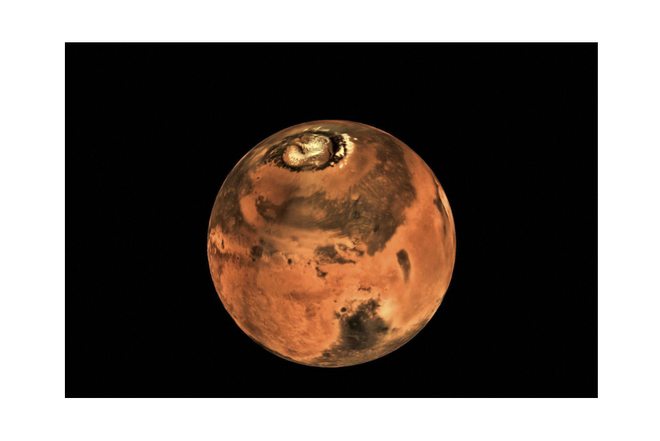
The Red Planet: A picture of the planet Mars taken by Mars Colour Camera (MCC) onboard India’s Mars Orbiter Spacecraft. PTI Photo / (ISRO), June 19, 2017.
Launched on November 5, 2013, MOM was India’s inaugural mission to Mars. The mission utilised the PSLV-C25 launch vehicle and had a total cost of $73 million. MOM’s objectives included testing key technologies for interplanetary exploration and studying Mars’ surface and atmosphere. The mission has made significant contributions to our understanding of the Martian exosphere.
In summary, India’s space endeavours are characterised by cost-effective missions and significant achievements, establishing the country as a formidable player in the global space community. These milestones, achieved within budget constraints, reflect ISRO’s commitment to advancing space exploration while optimising resource efficiency.
Recap
- While the number of Indian students heading to the United Kingdom (U.K.) has increased, with Indians now forming the second largest cohort of foreign students, the number of those who manage to stay in that country by securing jobs or pursuing further studies has been poor in recent years. Data shows that in the U.K. of the Indian students who arrived in 2017, only 17% switched to work visas, while 5% managed to extend their study visas. In contrast, a majority of visas (76%) expired by 2022. Data also revealed that many Indians enrolled in colleges with low-quality courses, which hints at the reason behind the issue.
- As India celebrated its 76 years of Independence, the Data team looked at India’s relative growth when compared to other select countries. Data showed that of the 26 countries compared, India’s GDP per capita ranking of 24 remained unchanged between the 1960s and 2022. The country’s HDI ranking worsened by three ranks from 1950 to 2021 of the 31 countries compared.
- On July 10, the Centre filed an affidavit in the Supreme Court which said that since 2019, Jammu and Kashmir (J&K) has been witnessing an “unprecedented era of peace, progress and prosperity” after the dilution of Article 370. Data revealed that while civilian deaths have seen a downward trend, militant deaths have remained high since the major inflection point in 2016 when Hizbul Mujahideen commander Burhan Wani was killed. Notably, post-dilution, relatively peaceful districts such as Poonch and Rajouri in the Jammu region, have also seen sharp spikes in terrorism-related deaths.
- After physicists in South Korea reported that they had synthesised a material that was a superconductor at room temperature and ambient pressure on July 21, data shows how difficult it is to find such a material. The retraction of many number of claims of discovering a room-temperature superconductor after independent scrutiny is proof that it will be after such verification that the latest claim will be accepted.
- When online education platform, Unacademy, fired an instructor, Karan Sangwan, after a video of him talking to students about voting for educated candidates went viral, and the issue snowballed, Data showed that the controversy was much ado about nothing, as about 72% of the current MPs completed graduation.
Fortnightly
- 10,000 e-buses were approved by the Union Cabinet under the PM e-bus Sewa scheme for city bus services across India. The scheme is aimed to shore up urban infrastructure under green mobility initiatives with a focus on cities having no organised bus services. An e-bus is any bus whose propulsion and accessory systems are powered exclusively by a zero-emissions electricity source. The scheme will have an estimated cost of ₹57,613 crore, of which the Centre will provide ₹20,000 crore. It will support bus operations for 10 years, an official statement said.
- 14 States and Union Territories are yet to sign a crucial Memorandum of Understanding (MoU) with the Union Education Ministry, which mandates the implementation of the National Education Policy to avail funds worth almost ₹13,000 crore for the next three years under the Centre’s flagship scheme for State-run higher education. Officials from several Opposition-ruled States informed The Hindu that they have raised concerns about the MoU, given that 40% of the Pradhan Mantri Uchchatar Shiksha Abhiyan (PM-USHA) budget must be borne by the States themselves, and no extra funds have been earmarked for NEP reforms. The Centre says it holding discussions to iron out differences with dissenting States.
- 521 lakh tonnes of rice to be procured by Union Food Ministry this kharif season. Union Food Secretary Sanjeev Chopra informed that the target for rice procurement was decided after discussions with all States. He added that the Ministry is on track to achieve the target of 100% distribution of fortified rice across all rice-consuming districts in the country.
- 230 Indian nationals from the Meitei ethnic community, went across the border to Myanmar when violence broke out in Moreh, a commercial town in Manipur bordering Myanmar. With little time to think, they believed they had escaped to safety, but have been stranded in the jungle since May 3. Moreh, through which the Asian Highway 1 runs, connecting Tokyo to Turkey, is currently surrounded by the Kuki-Zo tribes. The ethnic conflict has impacted about 60,000 people across the State.
- 70 million people in Asia were pushed into poverty due to inflation and the Covid-19 pandemic, according to Asian Development Bank. The bank said an estimated 155.2 million people, or 3.9% of the region’s population, were living in extreme poverty in 2022 -- 67.8 million more than would have been without the pandemic and higher living costs. Poor people have been hurt the most by higher inflation, the report said.
Chart of the week
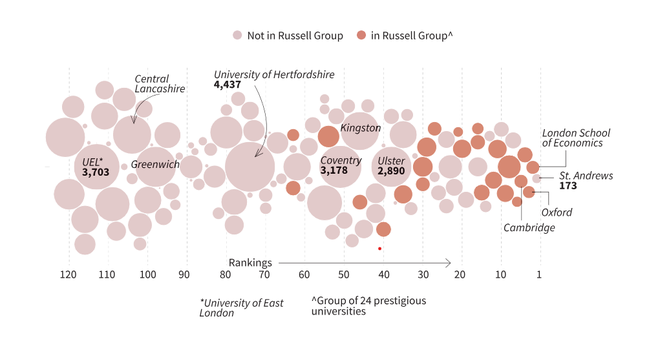
The chart shows the university-wise average number of Indian students enrolled in the past three years. The bigger the circle, the higher the number of students. The circles on the right are better ranked.
Data shows that in the past three years, about 30% of Indian students enrolled in universities ranked over 100 by The Guardian. The University of Hertfordshire (ranked 74) followed by The University of East London (ranked 113) were the top two destinations for Indian students. Only about 13% of Indians were enrolled in the 24 prestigious Russell Group universities which includes the University of Oxford and Cambridge.
Click here to know more about the reasonings behind why many Indian students studying in the U.K. are unable to stay in the country by securing jobs or pursuing further studies.
Flashback
When retail inflation saw a sharp spike at 7.4% in July, data showed that food and beverage inflation was responsible for the highest increase in the last 15 months. Vegetable inflation had quickened to 37% (the highest in 40 months) owing to the 200% acceleration in the retail inflation of tomatoes, the highest-ever since at least January 2015.
When the price of tomato went past ₹100 per kilogramme (kg) mark on the last day of June in at least 50 cities, data showed that it was the sudden and rapid fall in the quantity of tomatoes brought to various mandis across India in the last week of June that created a demand-supply mismatch leading to a rapid increase in the retail price of the staple vegetable.
Thank you for reading this week’s edition of the Data Point newsletter! To subscribe, click here. Please send your feedback to rebecca.varghese@thehindu.co.in







